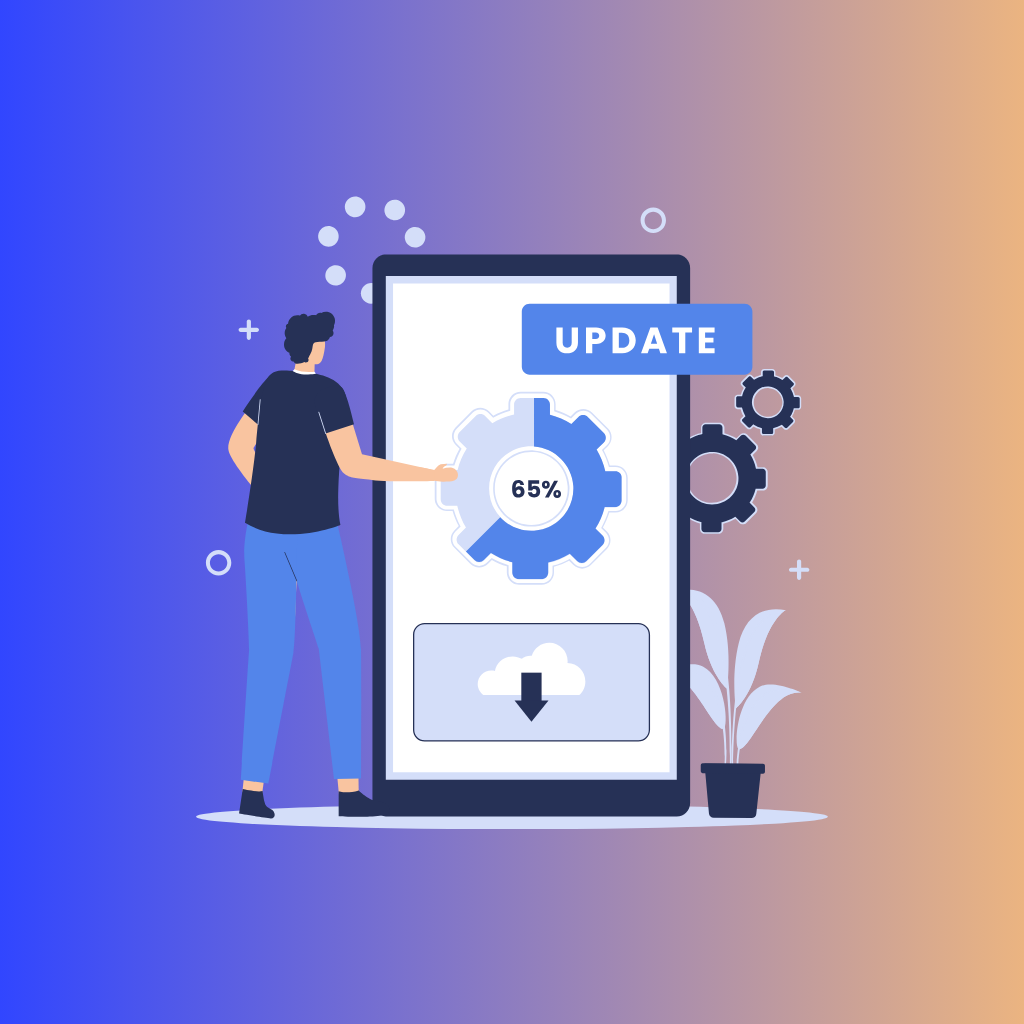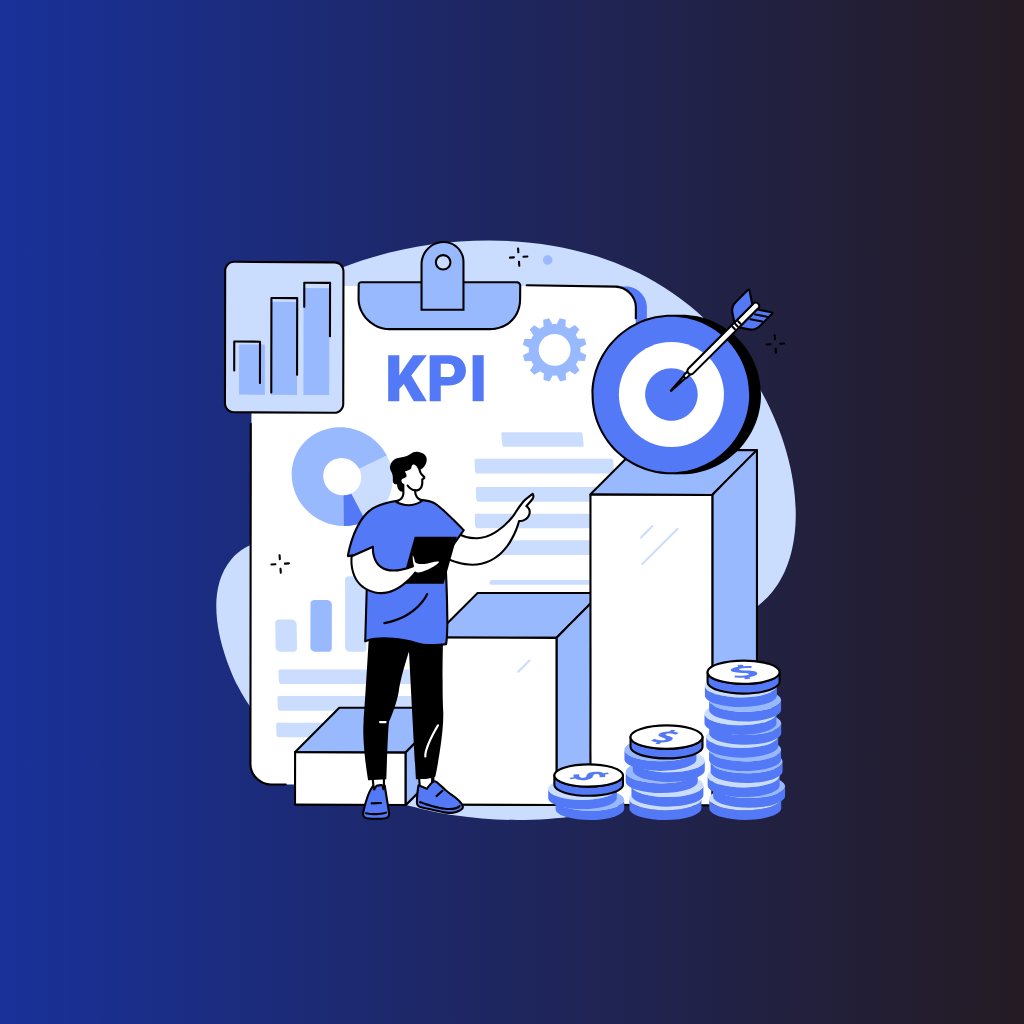In today's fast-paced digital world, the creation of a mobile app is just the beginning of its journey. Ensuring that an app remains functional, secure, and engaging over time requires ongoing maintenance and regular updates. This aspect of app development is crucial, not only to fix bugs but also to enhance user experience, improve performance, and meet the ever-changing demands of technology and users.
Regular app maintenance is essential for the longevity and success of a mobile application. It helps in retaining users by continuously improving their experience and ensuring the app remains compatible with current devices and operating systems. By understanding the scope of what app maintenance and updates involve, developers and business owners can better plan for the ongoing costs and resources needed to keep their app at the forefront of the market.
I. Enhancing User Experience
One of the most compelling reasons to invest in regular updates for your mobile app is to enhance the user experience. A smooth, intuitive interface that meets the users' needs can dramatically increase user engagement and satisfaction. With each update, developers have the opportunity to refine the app's functionality and aesthetics based on user feedback and emerging design trends.
How Updates Improve the App’s Interface and User Interactions
Updates can transform the user experience in several ways:
- User Interface (UI) Enhancements: By updating the visual elements of the app, such as colors, layout, and typography, developers can create a more appealing and modern look that resonates with users.
- User Experience (UX) Improvements: Simplifying navigation, speeding up the app, and making interactions more intuitive can make the app easier and more enjoyable to use.
- Accessibility Updates: Including features that make the app usable for people with disabilities, such as voice commands or text enlargement, can open up the app to a wider audience.
- Personalization Features: Allowing users to customize aspects of the app, like themes or dashboard layouts, can make them feel more connected and invested in the app.
Examples of Features or Enhancements That Could Be Added in Updates to Increase Usability
Several specific features and enhancements can be considered in updates to boost usability:
- Gesture Controls: Implementing swipe, drag, and pinch gestures can make the app more interactive and fun, providing a faster way to navigate through content.
- Predictive Text and Auto-Fill: For apps requiring data entry, predictive text and auto-fill functionalities can save user time and reduce input errors.
- In-App Tutorials and Help Sections: First-time users can benefit from guided tutorials or interactive help sections that explain how to use the app’s features.
- Feedback Systems: Incorporating ways for users to easily provide feedback within the app helps them feel heard and can guide future updates.
- Dark Mode: Offering a dark mode not only reduces eye strain in low-light environments but also extends battery life on OLED/AMOLED screens.
II. Fixing Bugs and Improving Performance
Maintaining the technical health of a mobile app is crucial for its success and longevity. Regular maintenance plays a pivotal role in identifying and addressing software bugs, as well as enhancing the overall performance of the app. This not only contributes to a smoother user experience but also helps in building trust and reliability among users.
The Role of Maintenance in Identifying and Fixing Bugs
Bugs in an app can range from minor glitches that slightly disrupt user experience to major errors that can cause the app to malfunction or crash. Here’s how regular maintenance contributes to bug resolution:
- Continuous Monitoring: Regular checks and performance monitoring can help pinpoint areas where bugs occur, often before users even notice them.
- User Feedback: Maintenance includes reviewing user feedback which often highlights issues that hadn’t been initially detected.
- Iterative Testing: After fixing identified bugs, developers test these fixes under various conditions to ensure no new issues have been introduced.
Proactive bug fixing is essential because it prevents the escalation of small issues into bigger problems that could negatively impact user retention and app reviews.
Importance of Performance Improvements to Keep the App Running Smoothly
Performance improvements are another critical aspect of app maintenance. Enhancing the app’s performance can lead to faster load times, smoother transitions, and more responsive interactions, which all contribute to a positive user experience. Here are a few reasons why performance improvements are vital:
- User Retention: Users are likely to uninstall an app if it frequently crashes or performs poorly. Efficient performance keeps users satisfied and engaged.
- Handling Increased Load: As the user base grows, the app needs to scale and handle more simultaneous interactions without compromising speed or reliability.
- Battery Usage Optimization: Improved performance can also mean optimized battery use, which is crucial for mobile users.
III. Security Enhancements
In an era where digital security threats are increasingly prevalent, maintaining the security of a mobile app is not just an option—it’s a necessity. As hackers devise new methods to exploit vulnerabilities, app developers must stay vigilant and proactive in safeguarding user data through regular updates and security enhancements.
How Regular Updates Help Patch Vulnerabilities and Protect User Data
Regular updates are crucial for mitigating these threats and ensuring the app remains secure against new vulnerabilities. Here’s how updates contribute to app security:
- Patching Vulnerabilities: Regular updates allow developers to patch known security holes and vulnerabilities that could be exploited by attackers. This proactive approach is essential for keeping the app secure.
- Enhancing Encryption Methods: Updates can strengthen the encryption used to protect data transmitted from and to the app, making it harder for attackers to intercept and decipher data.
- Implementing Stronger Authentication Protocols: Adding features like two-factor authentication (2FA) or biometric verification (such as fingerprint scanning or facial recognition) can secure user access more robustly.
- Compliance with Security Standards: Regular updates ensure the app complies with the latest security standards and regulations, which can change frequently, especially in industries handling sensitive information like finance or healthcare.
IV. Adapting to Technological Changes
The digital landscape is continually evolving, with new operating system updates, hardware advancements, and technological trends emerging regularly. For mobile apps, staying abreast of these changes is crucial, not only to maintain functionality but also to ensure compatibility and relevance in a competitive market.
The Need for Apps to Stay Compatible with the Latest Operating System Updates and Hardware Changes
Operating systems (OS) like Android and iOS frequently release updates that can significantly affect how mobile apps function. These updates may include new features, security improvements, and changes that could alter app compatibility. Similarly, new hardware technologies, such as faster processors, improved cameras, and sensors, offer new possibilities for app functionalities but also require apps to be updated to support these features.
Here’s why compatibility is crucial:
- Functionality: Apps need to function smoothly across all devices and OS versions their audience might use. An update in the OS might depreciate or alter the way an app interacts with the system, necessitating an update.
- User Experience: New hardware capabilities, like enhanced graphics or sensors, can allow for a richer, more immersive app experience, but only if the app has been updated to leverage these technologies.
- Security: New OS versions often include important security updates. Apps need to be compatible with these changes to ensure they provide adequate security measures.
Impact of Not Updating the App on User Retention and App Usability
Failing to update an app can have significant negative consequences on both user retention and overall app usability:
- Decreased User Satisfaction: If an app does not work as expected or becomes buggy after an OS update, users may become frustrated, leading to negative reviews and decreased user engagement.
- Reduced Functionality: Without regular updates, an app may not be able to take advantage of new features and improvements offered by the latest hardware and software, making the app feel outdated.
- Compatibility Issues: New devices and OS updates may not support older versions of apps, resulting in crashes or sub-optimal performance, which can alienate new users and prompt existing users to seek alternatives.
- Security Risks: Older versions of apps might be vulnerable to security breaches if they are not updated to address recent security threats, risking user data and trust.
V. Meeting Regulatory Requirements
As the digital ecosystem continues to expand, so does the complexity and scope of laws and regulations governing mobile applications. Regular app updates play a crucial role in ensuring that apps comply with these legal requirements, particularly those related to privacy and data protection. This not only helps avoid legal penalties but also reinforces user trust in the app’s commitment to safeguarding their data.
How Updates Ensure Compliance with New Laws and Regulations
Laws and regulations affecting mobile apps can change frequently and vary by region, requiring developers to be agile and proactive. Updates are necessary for several reasons:
- Adapting to Legal Changes: New laws may impose additional requirements on how apps operate, handle user data, or ensure user privacy. Regular updates allow developers to integrate necessary changes into the app to comply with these laws.
- Global Operations: For apps operating in multiple countries, staying compliant means adhering to a range of international laws, which can often be updated or changed. Regular updates help ensure compliance across all markets.
- Avoiding Fines and Legal Issues: Non-compliance can result in hefty fines and legal challenges. Frequent updates that address the latest regulatory requirements can mitigate these risks.
VI. Keeping Content Fresh and Engaging
In the competitive realm of mobile apps, content is king. Not only does it attract new users, but it also keeps existing users coming back. Regular content updates are crucial for maintaining the relevance and appeal of an app, ensuring that it continues to meet the evolving interests and needs of its user base.
The Importance of Content Updates in Keeping the App Relevant and Engaging
Constantly updating content within an app can significantly enhance user engagement and satisfaction. Fresh content helps to:
- Maintain Interest: Regular updates keep the content dynamic and interesting, which can help sustain user interest over time.
- Increase Retention Rates: When users know that they can expect new and engaging content regularly, they're more likely to remain active users of the app.
- Boost User Interaction: New content can encourage users to interact more with the app, whether it's through reading articles, playing games, or using new features.
Examples of How Dynamic Content Can Be Integrated into the App Through Updates
Dynamic content can be integrated into different types of apps in various ways, each designed to enhance the user experience and engagement:
- News and Educational Apps: These can offer daily or weekly articles, videos, or interactive lessons that keep users informed and engaged. For instance, an app could push notifications about breaking news or new topics based on the user’s interests.
- Fitness Apps: Regularly updated workout plans, challenges, and motivational content can help keep users engaged and committed to their fitness goals.
- E-commerce Apps: Updating the app with new products, promotions, and exclusive deals can drive sales and keep users interested in browsing the app’s offerings.
- Gaming Apps: Introducing new levels, characters, or storylines can rejuvenate interest in the game and provide a reason for players to come back.
- Social Media Apps: Features like "story" or "moment of the day" can encourage users to engage more frequently, sharing and consuming new content regularly.
VII. Market Adaptation and Competitive Edge
In the rapidly evolving tech landscape, staying current with market trends and emerging technologies is essential for any mobile app's success. Regular updates not only ensure the app remains relevant but also allow it to stand out in a crowded marketplace by adapting quickly to new demands and expectations.
How Regular Updates Can Incorporate New Market Trends and Technologies to Stay Competitive
Staying competitive in the app market means continuously enhancing the app to meet new technological advancements and consumer trends. Here’s how regular updates play a key role:
- Leveraging New Technologies: Whether it’s augmented reality (AR), machine learning, or blockchain, new technologies can provide unprecedented opportunities to enhance user experience and offer unique features.
- Adapting to User Preferences: Market trends can shift quickly, and what was popular last year might not be this year. Regular updates allow apps to adapt to these changes, whether it’s a new design trend, user interface improvements, or adding features that users demand.
- Staying Ahead of Competitors: By consistently updating and improving, an app can maintain a competitive advantage by offering better functionality or newer features compared to competitors.
VIII. Analytics and Feedback Utilization
In the realm of mobile app development, the use of analytics and user feedback is pivotal in shaping a successful update strategy. These tools provide invaluable insights into how users interact with the app, highlighting what works and what needs improvement. By carefully analyzing this data, developers can make informed decisions that significantly enhance the app's functionality and user experience.
How User Feedback Can Shape the Roadmap for Updates
User feedback is a direct line of communication between the app users and the developers, offering clear insights into user satisfaction, usability issues, and desired features. Here’s how it can shape the update roadmap:
- Prioritization of Features: User feedback can help identify which features are most valued by users, which are lacking, and what new functionalities users desire. This helps in prioritizing updates that will have the most impact.
- Identification of Pain Points: Negative feedback is particularly valuable as it highlights the areas where the app fails to meet user expectations. Addressing these issues can significantly improve user satisfaction.
- Enhancing User Engagement: By regularly updating the app based on user feedback, developers can foster a sense of community and loyalty among users, as they see their input leading to tangible improvements.
The Role of Analytics in Identifying Areas for Improvement in the App
Analytics go hand-in-hand with user feedback by providing a more quantitative measure of app performance and user behavior. Here’s how analytics contribute to app improvement:
- User Behavior Analysis: Analytics can track where users spend the most time within the app, where they drop off, and how they navigate through the interface. This helps in understanding user behavior and preferences in detail.
- Performance Metrics: Data on app crashes, response times, and other performance metrics can help pinpoint stability and speed issues that may not be obvious through user feedback alone.
- A/B Testing: By comparing different versions of the same feature within the app, developers can determine which one performs better in terms of user engagement and satisfaction.
Using analytics and user feedback effectively allows developers to continuously refine and optimize the app. This proactive approach to app development not only enhances the user experience but also drives the app’s evolution in a direction that is aligned with user needs and market demands. By incorporating these insights into the development roadmap, apps can remain dynamic and responsive to user needs, ensuring long-term success and relevance in the market.
The necessity and strategic importance of regular app maintenance and updates cannot be overstated. Throughout this discussion, we've explored various aspects of why keeping your mobile app updated is crucial not only for its functionality but also for its continued success and relevance in the market.
Recap of the Main Points
- Enhancing User Experience: Regular updates ensure that the app remains intuitive, engaging, and aesthetically pleasing, adapting to user expectations and feedback.
- Fixing Bugs and Improving Performance: Maintenance is key to identifying and rectifying bugs, enhancing performance, and ensuring the app runs smoothly, which in turn affects user retention positively.
- Security Enhancements: Updates help patch vulnerabilities, fortify app security, and protect user data, aligning with the latest security standards and building trust among users.
- Adapting to Technological Changes: Keeping the app compatible with the latest operating system updates and hardware ensures it functions properly on all new devices and platforms.
- Meeting Regulatory Requirements: Updates ensure compliance with evolving legal standards, particularly in terms of privacy and data protection, which are critical to avoiding fines and safeguarding user interests.
- Keeping Content Fresh and Engaging: Regular content updates keep the app interesting and engaging, encouraging continued user engagement and satisfaction.
- Market Adaptation and Competitive Edge: By incorporating new market trends and technologies, updates help the app maintain its competitive edge and adapt to changing market conditions.
- Analytics and Feedback Utilization: Using analytics and user feedback to inform updates ensures that the app meets user needs and resolves any pain points effectively.
In conclusion, regular app updates are not just a routine part of app maintenance—they are a strategic necessity. They play a crucial role in ensuring that the app remains secure, efficient, compliant, and aligned with user expectations and technological advancements. By investing in regular updates, developers can ensure that their app remains a relevant, powerful tool capable of meeting the challenges of an ever-evolving digital landscape. This commitment to continual improvement not only enhances the user experience but also solidifies the app’s position in the market, paving the way for long-term success and sustainability.




